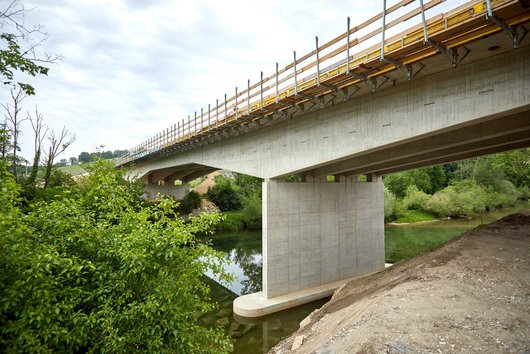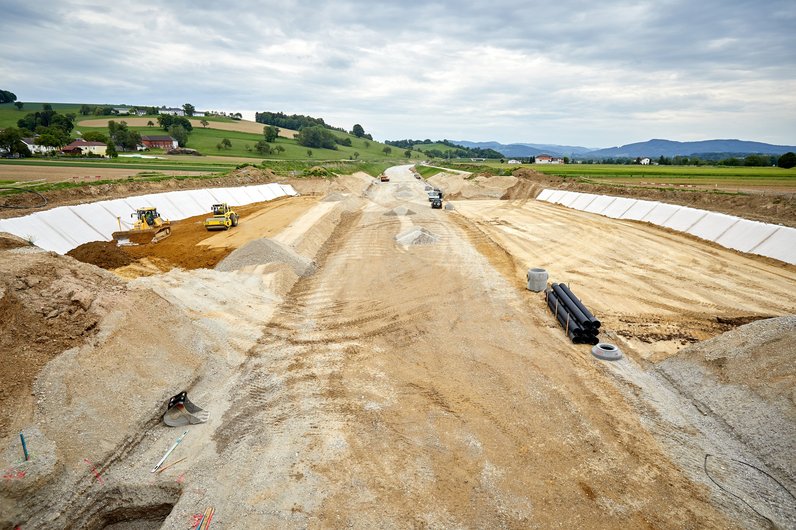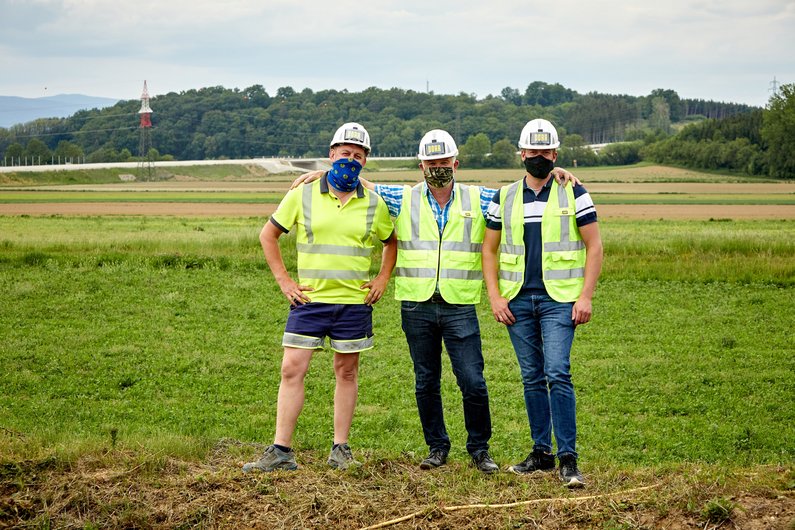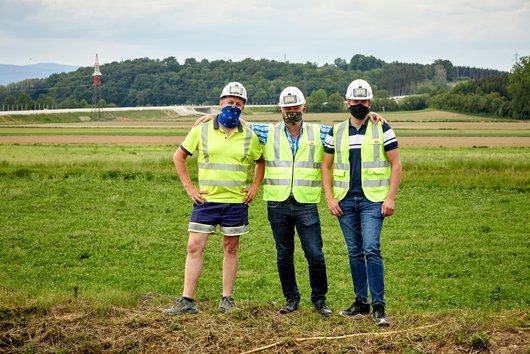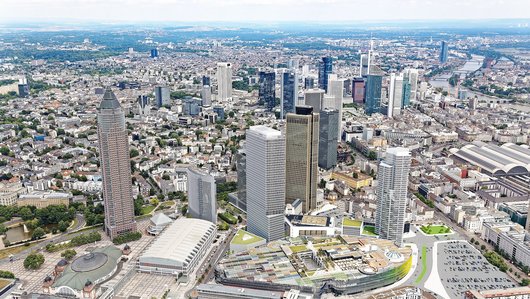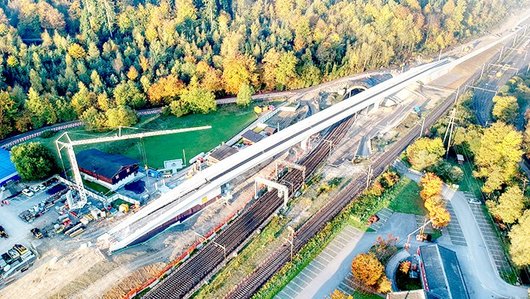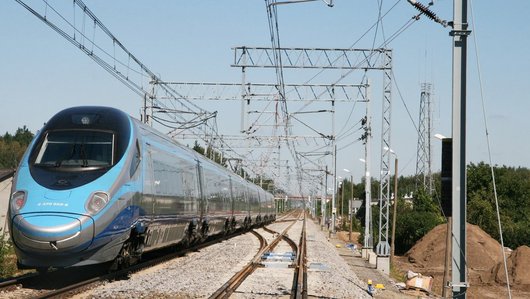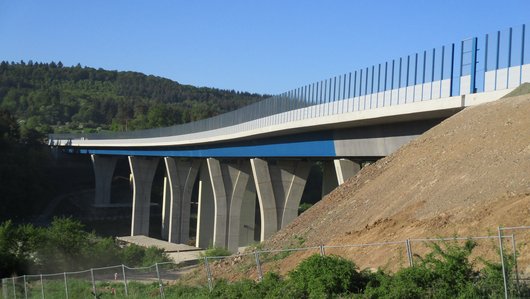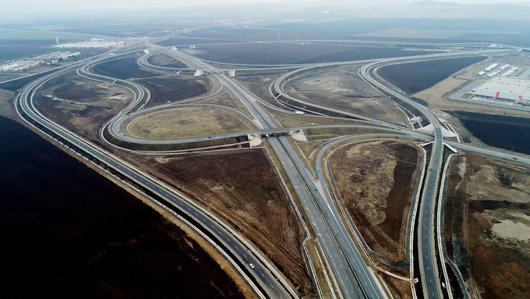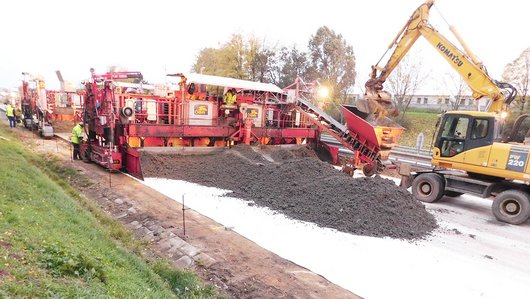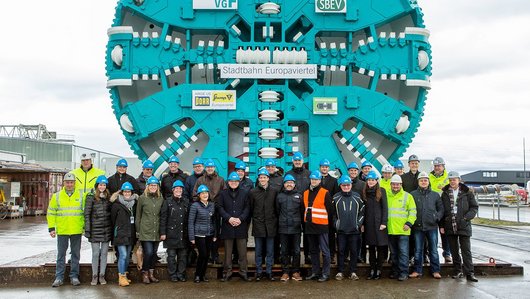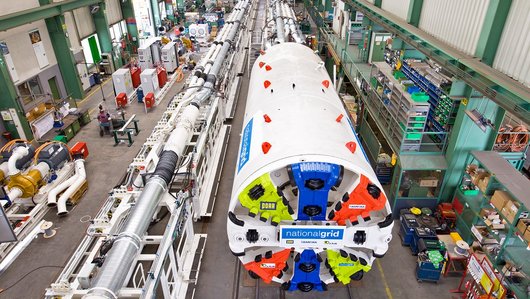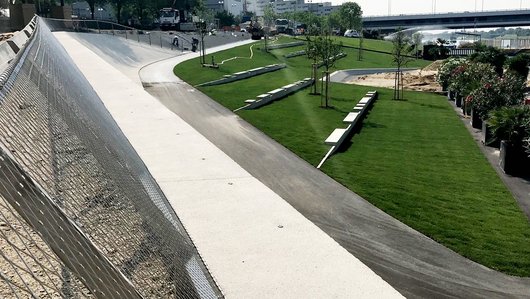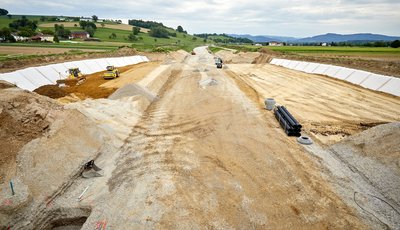
New B25 bypass
PORR subsidiary Hinteregger is working on a joint project to divert the B25. The new bypass will reduce through traffic and improve quality of life in the town.
In the Scheibbs district in Lower Austria, the B25 main road runs straight through the centre of Wieselburg. A new 8-kilometre bypass is expected to reduce traffic by up to 50%. The tricky elements in the contract are largely due to the interaction between bridge construction and earthworks. The consortium is building 14 of the 17 bridges on the new stretch of road, remediating a contaminated site and implementing some 940,000m3 of embankment.
-
EmployerLand Niederösterreich
-
ContractorARGE B25 UF Wieselburg bestehend aus G. Hinteregger & Söhne (PORR), Granit, Swietelsky
-
Project typeCivil Engineering/Infrastructure . Road and bridge construction
-
Project scopeBuilding the 8km B25 Wieselburg bypass, including 14 of the 17 bridges and 940,000m³ of embankment
-
Order volumeEUR 51m net
-
Construction start09/2017
-
Construction end06/2021 (Gesamtverkehrsfreigabe)
Shoulder-to-shoulder to completion
Every day, 2,000 lorries and 14,000 cars rumble through central Wieselburg. The new B25 bypass will promote economic development in Wieselburg, improve quality of life for local residents and increase traffic safety.
Back in 2017, Hinteregger headed the consortium that won the contract to build the bypass. Since 2018, Hinteregger has been a PORR subsidiary – and this project certainly requires the various departments to exemplify our ‘shoulder-to-shoulder’ principle. Perfect interaction between the earthworks and bridge construction teams is essential to mastering the complexity of the task, which includes building 14 of the 17 bridges on the route. PORR’s Civil Engineering department in the Lower Austria office has taken on a major role in the asphalt works; concreting company Österreichische Betondecken Ausbau GmbH, or ÖBA, is responsible for stabilising and the in-situ concrete barriers; and PORR Umwelttechnik GmbH is handling remediation and clearance of a contaminated landfill on the route.
The bypass will have an asphalt carriageway along its full length. The superstructure comprises a 20cm frost protection layer topped with a 30cm thick cement-stabilised base course and three layers (15cm) of asphalt. The construction period has been extended somewhat as a result of temporary restrictions due to the coronavirus crisis. The first section, from the junction with the L96 as far as the southern roundabout, is expected to open to traffic in December 2020.
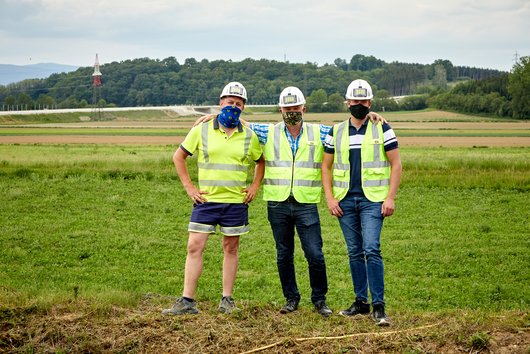

This is a particularly complex project due to the combination of earthworks and bridge construction, as well as the obstacles along the route. We are building 14 bridges on the route, remediating a contaminated site and building 940,000m3 of embankment.
Earthworks and bridge construction
The consortium has already completed the challenging earthworks for the project. Material availability and specialised quality requirements certainly tested the team to the utmost. The material was delivered to the construction site by lorry from six different production sites. Around 800,000m3 of external material was brought in for the 940,000m3 of embankment; the rest was reclaimed from the construction site and improved with lime stabilisation.
The team is building 14 of the 17 bridges on the bypass route. Two of these cross the River Erlauf, and the northern Erlauf Bridge also spans the millrace and an intermediate island, with a total length of 200m. These two bridges were originally planned to have reinforced concrete composite superstructures. However, in the course of a value engineering process, the client decided to adopt the consortium’s proposal and implement the superstructures with reinforced concrete slabs using in-situ concrete. The team therefore built both structures as semi-integral bridges.
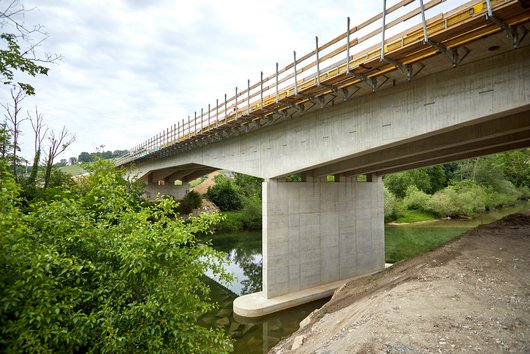

Landfill and sewage treatment plants
Another technical challenge along the route was presented by the bottleneck point between the town’s sewage treatment plant and Wieselburg Brewery. The first step was to relocate the vertical clarifier, as it was in the way of the new route. The 110kV power line was also lifted along this stretch, to allow for the high embankment. Since the bottleneck left no room for embankment slopes in this section, the PORR team built a precast element retaining wall from precast elements, secured with fleece tiebacks. A grid of unusually deep bored piles was used for the retaining wall foundation, as the adjacent sewage treatment plant was vulnerable to settlement. Another obstacle to be surmounted on the route was an old landfill site located at the L6141 crossing. The team cleared the site professionally with the help of PORR Umwelttechnik GmbH.
Noise protection and water conservation
Numerous protective measures for both people and planet are being implemented in the Wieselburg bypass project. The team is required to document 555 environmental impact checks during the project. Noise protection measures are being installed along almost the entire length of the bypass. In total, there will be 38,000m2 of noise protection wall up to 4m high.
Since the new bypass runs through a water conservation area, protecting the groundwater takes top priority. In addition to sealing the foundation layer, the consortium has also built six settling and soil filter basins and a retention basin, making a total of 5,300m3 of basins. Twenty wells have also been drilled to help with ongoing groundwater monitoring and measurement. Four groundwater measurement stations collect data round the clock and send it to a central system, which analyses the groundwater flows in detail and saves the data. Other measures include reforestation, green bridges and wildlife passages, amphibian protection walls and passages, and bat nesting boxes.


Technical data
-
Embankment940,000 m³
-
Spoil540,000 m³
-
Asphalt surface160,000 m²
-
Asphalt volume62,000 tonnes
-
Soil improvement250,000 m²
-
Bored piles2,900 running metres DN120
-
Steel incorporated2,700 tonnes
-
Concrete incorporated26,000 m³
-
Noise protection wall38,000 m²


